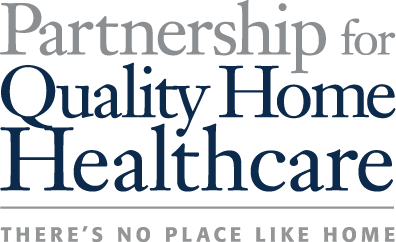August 28, 2013
Home Health Leaders: Medicare Proposed Rule Could Result in Nearly $100 Billion in Total Cuts to Home Health Benefit
Posted in: Press Release
Washington, DC – Representatives of the nation’s three leading home health organizations – National Association for Home Care and Hospice (NAHC), Visiting Nurse Associations of America (VNAA), and Partnership for Quality Home Healthcare (Partnership) – today released new analyses demonstrating the impact the proposed Home Health Prospective Payment System (HHPPS) rule issued by the Centers for Medicare and Medicaid Services (CMS) is projected to have on the nation’s home health delivery system and 3.5 million Medicare home health beneficiaries, if finalized in its current form.
In CMS’ proposed HHPPS rule, issued June 27, CMS proposes to further reduce Medicare home health funding by instituting a rebasing rate set at the maximum level permitted by law – 3.5 percent annually from 2014 to 2017 – totaling a 14 percent cut over the next four years. Analysis of the proposed rule reveals that a 14 percent reduction in home health reimbursement would result in a cut of $22 billion over 10 years.
When coupled with the $72.5 billion in Medicare home health funding that has been cut since 2009 due to a series of legislative and regulatory changes, the nation’s home health sector is facing a total cut of nearly $100 billion. If finalized as proposed, this cut is projected to impose net operating losses on 47 of the 50 states and the District of Columbia by 2017, rendering many home health agencies inoperable. Nationally, the Medicare home health margin will drop to -9.77 percent.
“In the more than 30 years I have had the privilege to represent the nation’s home health community, I have never seen a time when our sector faced such devastating funding cuts,” said Val J. Halamandaris, President of the National Association for Home Care and Hospice (NAHC). “The Administration and Congress must not ignore the realities of this proposal and the real threat it poses to the future of home health delivery in America. These proposed cuts will result in reduced patient access to cost-effective healthcare – the exact opposite of what the Affordable Care Act set out to achieve.”
During a media teleconference, the home health leaders stressed the essential nature of the home health benefit and the direct threat CMS’ proposed cut places on the 3.5 million vulnerable, homebound American seniors and disabled individuals who receive clinically advanced, cost-effective and patient preferred home healthcare each year. Data show that Medicare’s home health beneficiaries are older, sicker and poorer than the Medicare population as a whole and, therefore, at greater risk when cuts take effect.
“The most vulnerable seniors in our patient population – patients with clinical complexity and low socioeconomic status – are more commonly associated with inadequate Medicare reimbursement due to the nature of their care,” said Tracey Moorhead, President and Chief Executive Officer of Visiting Nurse Associations of America. “CMS’ proposed cuts put these vulnerable patients at an even greater disadvantage for accessing the home healthcare they desperately need.”
Home health leaders also stressed that these cuts do not have to happen. The Affordable Care Act (ACA) provides the Secretary with discretionary authority in implementing the rebasing provision and does not direct her to reduce Medicare home health payments. The statute, Executive Orders, and case law also call for a series of steps to be taken to ensure that any changes made by CMS are “appropriate” and “provide for continued access to quality services.”
“In crafting the proposed rule, CMS appears not to have undertaken a full assessment of the home health sector’s economics for all four years in which rebasing will take place,” said Eric Berger, CEO of the Partnership for Quality Home Healthcare. “Congress directed the Secretary to undertake such an analysis, and we are hopeful that it will be completed before this rule is finalized.”
“We have heard that some may think there is no option but to rebase payments at the highest percentage, but we respectfully disagree,” added Chairman Billy Tauzin, senior council to the Partnership for Quality Home Healthcare. “The Secretary has full discretionary authority under this provision and should use it to ensure continued access to quality services.”
Home health leaders also revealed a new analysis of CMS data compiled by Avalere Health and Dobson DaVanzo Associates, which finds that home health agency margins are already on the decline. The analysis also reveals the particularly significant risk faced by small home health agencies as well as the underserved and minority communities, which depend upon them.
Added Tauzin, “This analysis signals that negative Medicare margins resulting from the potential cuts may be worse than even we anticipate, which should raise red flags across the Administration and throughout Congress. We strongly urge CMS to complete a thorough assessment of this rule and its impact on Medicare home health so that American seniors don’t pay the price for a flawed policy.”
